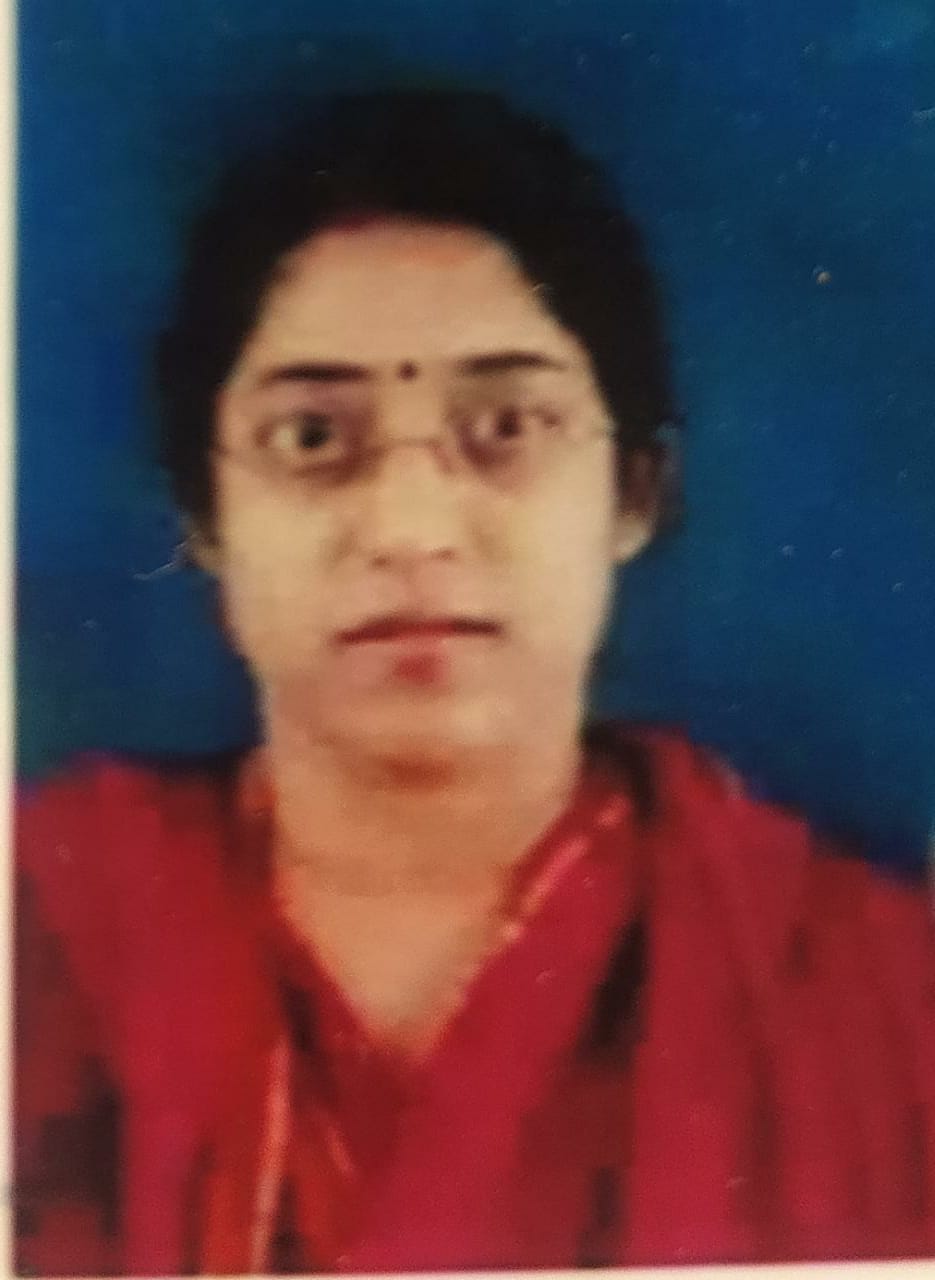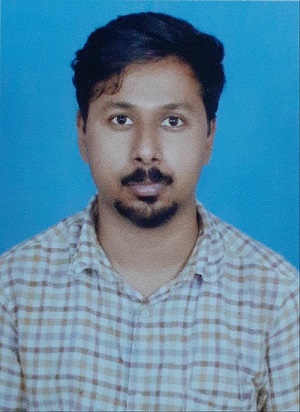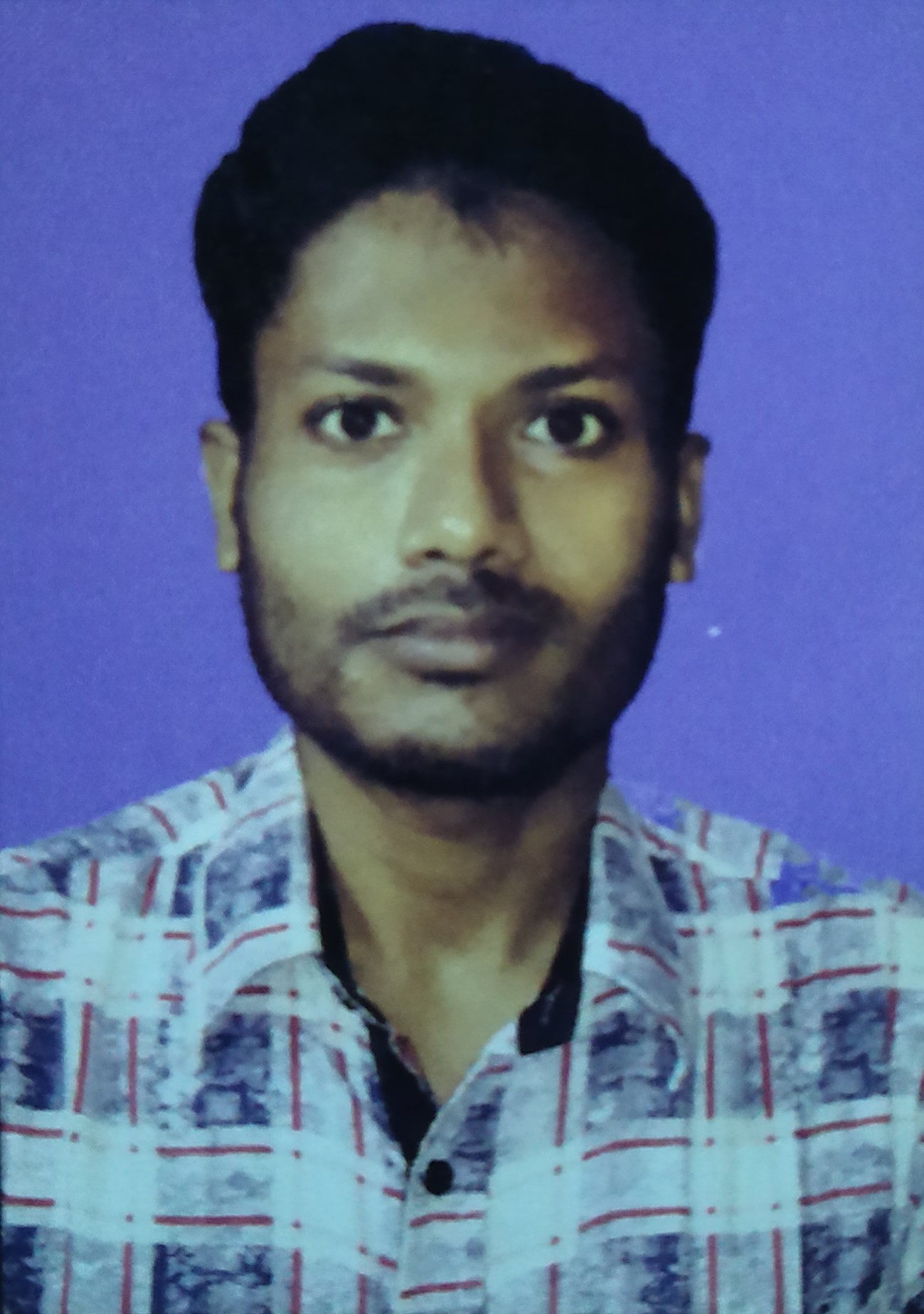- NAAC Re-Accreditated with "B+" Grade
- pkhnm2010@gmail.com
- 03214-250236 / 250941
The commencement of the journey of the department of History, P.K.H.N Mahavidyalaya took place in the year 1966 with the B.A General Course affiliated to the University of Calcutta. The Honours Course was introduced in the year 2001, with a maximum intake capacity of 35 students later increased to 40. Presently the maximum intake of students in Honours stands at 61, while it is unlimited for the Gen Course as before. The department has successfully implemented the guidelines set by the University of Calcutta regarding the introduction of the CBCS in the academic year 2018-19.
A mentoring group has been formed with the students of honours course and they are regularly given questions with answers especially objective type by the teachers. The utility of such a practice lies in the fact that the students are developing a thorough knowledge of their subject.
The weak learners are benefitted by this practice, as it gives them a good opportunity to score well in their exams. Their problems and difficulties in learning are also attended to by the teachers on a personal level.
Quizzes are organised as part of interactive teaching and enhancement of interest in learning.
Advanced Learners are encouraged to speak on topics from within their syllabus. This is being done on a regular basis and has yielded good results.
Quizzes, projects have also been introduced for general course students.
Extension activity of the department is under consideration.
Library Facilities:
The library resource of the department is rich in content. It has a good number of text books as well as reference books in English and Bengali. It is accessible to the students. There is also a departmental library which lends books under the supervision of the faculty members.
Purash Kanpur Haridas Nandi Mahavidyalaya, Howrah offers the Three- year B.A Honours in History which comprises 6 Semesters. The curriculum consists of 14 Core Courses (CC), 4 Discipline Specific Elective (DSE) courses, 2 Ability Enhancement Compulsory Courses (AECC), 2 Skill Enhancement Courses (SEC). The Generic Elective Courses (GE) are same as the Core Courses (CC) offered in the B.A General Syllabus. The semester wise distribution of papers along with brief course specific outcomes are described below. Overall programme outcomes have been stated at the end.
The above two papers give an insight into the ancient civilizations of both India and the world. Thus by studying these papers the students gain knowledge about the evolution of mankind through the different ages referred to as the Stone Ages and the unfolding of different cultures and civilizations based on them in India and the world at large.
The above two papers help the students to form a comprehensive idea about the early medieval period of India which is actually a transition period. How the ancient period gradually changes its characteristics making place for the beginning of the medieval period is extremely interesting and a dynamic period of Indian History. The changes in the political, social, economic and cultural front which occurs during this period acquaint the students with all kinds of knowledge in all disciplines be it politics, economics, literature, science etc. Growth of regional politics is an important development during this period.
In case of the second paper the students are made familiar with the extremely rich civilizations of the world like the Egyptian, Chinese, and Greek and Roman civilizations. This paper actually help the students to develop a liking for world history and understand international events to be taught in the following semesters.
In this semester the students learn about the medieval period of Indian history in two phases i.e. the Delhi Sultanate and the Mughal period. In the second paper the history of transformation of Europe is introduced. The transition of the European Civilization from feudal economy to a capitalist one and the debate centring on it comprises a very important phase of world history. The invention of printing press which actually revolutionised communication, the invention of gunpowder bringing forth the military revolution are some of the very important topics which students study in this paper.
In this semester the students mainly study the history of Great Britain under the Stuart Period mainly the Civil War, the Scientific Revolution, the period of remarkable inventions especially in the field of medical science and the new economic concepts like mercantilism and the beginning of the Industrial Revolution in the paper on European History. The other two papers chart the trajectory of the history of India from the beginning of the Mughal period till the advent of the British and the consolidation of their power in India
In this semester the students are made familiar with the various revolutions starting with the epoch making French Revolution which actually paved the way for emergence of democracy along with the birth of the ideas of liberty, equality and fraternity. Thus this period of history witnessed a constant struggle between the reactionary forces and those who were progressives. On the Indian side we have the outbreak of the Revolt of 1857, its causes and consequences; thus in both these papers the students are made familiar with the ideas of nationalism by making them aware of the struggles against the colonising powers. These papers are therefore extremely important in the present context.
In the last two papers the Indian national movement for independence, the outbreak of the Second World War followed by the birth of two power blocs namely the communist and the capitalist represented by United States and the Soviet Union.
History is a discipline that instructs students on how to read and process data on people, societies, cultures, events and places that are far removed in time and space from our present. However since it is a continuous dialogue between the past and present, the practitioners of this discipline never face any difficult in comprehending the events which have already ceased to exist in the current world. The study of history is the study of humanity and it reveals truths about the human condition. Studying History reveals that people are fundamentally similar to each other regardless of where and when they live, and that many differences arise because of cultural differences. The sense of Unity in Diversity is one of the most valuable tenets of History which forms an important component of the human civilization. The noble values of tolerance, empathy, patience, can owe their existence to the past. Even warfare, ruthlessness, cruelty, deception, betrayal which can be termed as ‘negative’ are also associated with a large number of historical events. However such events clearly show that the consequences are not pleasant and that is a valuable lesson of History for the generations to come.
Overall, the present curriculum of History (Honours and General), provides an all encompassing outlook to the students by giving them an in-depth knowledge on the political, social, economic, cultural dimensions of those particular periods, Even the marginalised population , women and other deprived sections are now being given their due importance which lacked in the previous historiography of the Elites. The papers on skill enhancement makes an attempt to attract the students to subjects like museology, art history, media which might help them to find newer avenues of employment. A student of History is well equipped to work in any field be it academics, civil services, journalism, mass communication, since they are made familiar with all the important attributes of life. Today research in History is making strides into newer areas every day. Gender studies, subaltern studies, history of medicine, technology, popular culture and many other fields are now being continuously invaded by the historian. Thus it is a subject with enormous scope, impregnated with positivism.

Associate Professor & HoD

Assistant Professor
SACT-II

SACT-II
CC5 INTERNAL TRADE IN EARLY MEDIEVAL INDIA PART2 (Prof. Aritra Gangopadhyay)
CC7 JALALUDDIN KHALJI (Prof. Aritra Gangopadhyay) CC7 Agrarian Reform of Alauddin (Prof. Aritra Gangopadhyay) CC5 MOD3.A) INTERNAL TRADE IN EARLY MEDIEVAL INDIA (Prof. Aritra Gangopadhyay) CC5 MOD4.B) Maritime Trade (Prof. Aritra Gangopadhyay) 3rd Semester (Gen.): Mughal Art (Prof. Manik Paul) Conflict between Mughal & Maratha and fall of Mughal Empire CC3 (Prof. Manik Paul) Deccan ulcer GE3 (Prof. Manik Paul) দিল্লি সুলতানি যুগের স্থাপত্য (Dr.Tapabrata Bhaduri) MAIN FEATURES OF HINDU TEMPLE ARCHITECTURE (Prof. Aritra Gangopadhyay) SECA1 MAURYAN ARCHITECTURE (Prof. Aritra Gangopadhyay) CC3 REFORMS OF ALAUDDIN (Prof. Aritra Gangopadhyay) SECA1 SUNGA ARCHITECTURE (Prof. Aritra Gangopadhyay) 4th Semester (Hons.): Mercantilism and Laissez-faire policies , paper CC8, mod V (Dr. Ujjaini Samanta Roy) History of England, paper CC8, mod III (Dr. Ujjaini Samanta Roy) Monetary System of the Mughals, paper CC10, mod VI (Dr. Ujjaini Samanta Roy) Rajput policy of Akbar, paper CC9, mod II (Prof. Manik Paul) Mughal Art, CC10, (Prof. Manik Paul) Notes on SherShah, CC9 (Prof. Manik Paul) Beginning of Indian Cinema (Dr. Tapabrata Bhaduri) Swang (Dr. Tapabrata Bhaduri) Assignment CC10 (Dr. Ujjaini Samanta Roy) Assignment, CC9 (Prof. Manik Paul) Assignment, CC10 (Prof. Manik Paul) Assignment, CC10 (Dr. Ujjaini Samanta Roy) English Civil War, CC8 (Dr. Ujjaini Samanta Roy) 18thcentury Debate, CC10, Mod 5(a) (Dr. Ujjaini Samanta Roy) Rise of successor states, 18 th century, Bengal, CC10 (Dr. Ujjaini Samanta Roy) Popular Culture and History - Understanding Popular Culture (Dr. Tapabrata Bhaduri) CC4, Magic, Part 1 (Dr. Ujjaini Samanta Roy) CC4, Magic, part 2 (Dr. Ujjaini Samanta Roy) CC4, Magic,part 3 (Dr. Ujjaini Samanta Roy) CC4, magic, part 4 (Dr. Ujjaini Samanta Roy) CC- 8(Mod-2) (Prof. Somnath Seth) ক্যালেন্ডার আর্ট ও রাজা রবি বর্মা (SEC B-1 Module 2) (Dr. Tapabrata Bhaduri) নৌটঙ্কি (SEC B-1 Module-3) (Dr. Tapabrata Bhaduri) ভারতের লোকনাট্য (SEC B-1 Module-3) (Dr. Tapabrata Bhaduri) Industrial Revolution (Dr. Ujjaini Samanta Roy) ভারতের মেলা (SEC B-1 Module 5) (Dr. Tapabrata Bhaduri) ভারতের লোক-উৎসব (SEC B-1 Module 5) (Dr. Tapabrata Bhaduri) ভারতের লোকচিত্রকলা (SEC B-1 Module 2) (Dr. Tapabrata Bhaduri) Aurangzeb Part-1 CC10 (Prof. Aritra Gangopadhyay) DIGGERS MOVEMENT CC8 (Prof. Aritra Gangopadhyay) DECCAN POLICY OF AURANGZEB CC10 (Prof. Aritra Gangopadhyay) English Revolution -Accession of Charles 2 CC10 (Prof. Aritra Gangopadhyay) MUGHAL-MARATHA RELATIONSHIP UNDER AURANGZEB CC10 (Prof. Aritra Gangopadhyay) CONQUESTS OF AKBAR (Prof. Aritra Gangopadhyay) RELIGIOUS POLICY OF AKBAR CC9 (Prof. Aritra Gangopadhyay) GLORIOUS REVOLUTION CC8 (Prof. Aritra Gangopadhyay) JAGIRDARI AND MANSABDARI SYSTEM CC10 (Prof. Aritra Gangopadhyay) SCIENTIFIC REVOLUTION CC8 (Prof. Aritra Gangopadhyay) JOHN LOCKE CC8 (Prof. Aritra Gangopadhyay) ROMAN PAPACY CC8 (Prof. Aritra Gangopadhyay) JOHN LOCKE CC8 (Prof. Aritra Gangopadhyay) CONQUESTS OF AKBAR CC9 (Prof. Aritra Gangopadhyay) Central Administration of Akbar CC9 (Prof. Aritra Gangopadhyay) SCIENTIFIC REVOLUTION Part3 CC8 (Prof. Aritra Gangopadhyay) RISE OF SIVAJI PART1 CC10 (Prof. Aritra Gangopadhyay) EVOLUTION OF THE MANSABDARI SYSTEM UNDER AKBAR CC9 (Prof. Aritra Gangopadhyay) Prelude to Industrial Revolution,CC8,mod 5b (Dr Ujjaini Samanta Roy) Rise of University in Mediaeval Europe, CC4, Mod 2 (Dr Ujjaini Samanta Roy) Rise of University in Mediaeval Europe, paper CC4 (Dr Ujjaini Samanta Roy) CAUSES BEHIND THE MUGHAL DECLINE (Prof. Aritra Gangopadhyay) 4th Semester (Gen.): Rise of successor states, 18 th century, Bengal, CC4 GE4 (Dr. Ujjaini Samanta Roy) Genesis of Communalism in India, CC4 GE4 (Dr. Ujjaini Samanta Roy) The Khilafat Question and Communalism (Dr. Ujjaini Samanta Roy) The Khilafat Question and emergence of Communalism (Dr. Ujjaini Samanta Roy) Road to Partition (Dr. Ujjaini Samanta Roy) Champaran Satyagraha (1917) (Dr. Ujjaini Samanta Roy) WORKING CLASS MOVEMENT IN AHMEDABAD UNDER THE LEADERSHIP OF GANDHI CC4 GE4 (Prof. Aritra Gangopadhyay) NON-COOPERATION MOVEMENT CC4 GE4 (Prof. Aritra Gangopadhyay) CIVIL-DISOBEDIENCE Movement CC4 GE4 (Prof. Aritra Gangopadhyay) RESURGENCE OF REVOLUTIONARY NATIONALISM AT THE TIME OF CIVIL-DISOBEDIENCE MOVEMENT CC4 GE4 (Prof. Aritra Gangopadhyay) YOUNG BENGAL MOVEMENT CC4 GE4 (Prof. Aritra Gangopadhyay) SOCIO-RELIGOUS REFORM MOVEMENTS IN 19TH C. BENGAL CC4 GE4 (Prof. Aritra Gangopadhyay) Conservation of Archival material, ( Functions of Archives). PT. 1 (Dr. Ujjaini Samanta Roy) 5th Semester (Hons.): Dynamics Of expansion Awadh (Prof. Somnath Seth) India 18 th century - society, economy, policy (Prof. Somnath Seth) Capitalist Industrialization in England (Dr. Ujjaini Samanta Roy) Capitalism in England (Dr. Ujjaini Samanta Roy) Europe between two world wars (short question) (Prof. Somnath Seth) Najizm in Germany (Prof. Somnath Seth) Russo German Non-aggrission pact 1939 (Prof. Somnath Seth) 1st world War responsibility Germany (Prof. Somnath Seth) Origins and course of the second World War (Prof. Somnath Seth) Industrialization in Germany (Dr. Ujjaini Samanta Roy) July Rajtantra (Prof. Somnath Seth) Role of Government (Dr. Ujjaini Samanta Roy) Rammon1 (Prof. Somnath Seth) Indigo Movement CC12, DSEA1, Mod6 (Dr. Ujjaini Samanta Roy) What do you mean by Continental System (Prof. Manik Paul) Chinese tribute system replace by the treaty system in the period from 1842 to 1860 (Prof. Manik Paul) CC11 BACKGROUND OF FRENCH REVOLUTION (Prof. Aritra Gangopadhyay ) DSEB1 PRE-MODERN CHINESE SOCIETY (Prof. Aritra Gangopadhyay) CC11 THIRD ESTATE- PRE-REVOLUTIONARY FRANCE (Prof. Aritra Gangopadhyay) CC11 BOURBON DYNASTY AND ITS RESPONSIBILITY FOR THE CRISIS OF 1789 (Prof. Aritra Gangopadhyay) CC11 INTELLECTUALS IN THE FRENCH REVOLUTION (Prof. Aritra Gangopadhyay) CC11- Economic Causes of the French Revolution (Prof. Aritra Gangopadhyay) SEM5 DSEB1 SINOCENTRISM (Prof. Aritra Gangopadhyay) Santhal Uprising, Pt.1, CC12, Mod 6 (Dr. Ujjaini Samanta Roy) Santhal Uprising, Pt- 2, CC12, Mod 6 (Dr. Ujjaini Samanta Roy) Santhal Uprising, Mod 6, CC12 (Dr. Ujjaini Samanta Roy) Deccan Uprising, Mod 6(d), CC12, pt-1 (Dr. Ujjaini Samanta Roy) Deccan Uprising, Mod 6, Pt- 2, CC12 (Dr. Ujjaini Samanta Roy) 5th Semester (Gen.): অভিকরণ শিল্প (Performing Arts) - লোকনাট্যকলা সোয়াঙ (SEC A-2) (Dr. Tapabrata Bhaduri) Importance of Peninsular War DSE-A2 (Prof. Manik Paul) Cause & effect of first Anglo Chinese war or First Opium war DSE-B1 (Prof. Manik Paul) MAIN FEATURES OF HINDU TEMPLE ARCHITECTURE (Prof. Aritra Gangopadhyay) দিল্লি সুলতানি যুগের স্থাপত্য (Dr. Tapabrata Bhaduri) SECA1 MAURYAN ARCHITECTURE (Prof. Aritra Gangopadhyay ) 6th Semester (Hons.): Marshall Plan,PT.1 (Dr. Ujjaini Samanta Roy) Marshall Plan, PT.2 (Dr. Ujjaini Samanta Roy) Cold War, CC14, PT 1, Introduction (Dr. Ujjaini Samanta Roy) Audio lecture, Prof.USR, Sem6, HISA, CC14, mod 1 (Dr. Ujjaini Samanta Roy) USR, Sem6, HISA, CC 14, audio kec, pt 2 (Dr. Ujjaini Samanta Roy) NON-COOPERATION MOVEMENT PART1 DSEA3 (Prof. Aritra Gangopadhyay) ROWLATT SATYAGRAHA CC13 (Prof. Aritra Gangopadhyay) DETENTE PART2 CC14 (Prof. Aritra Gangopadhyay) NON-COOPERATION PART2 DSEA3 (Prof. Aritra Gangopadhyay) ROWLATT SATYAGRAHA CC13 (Prof. Aritra Gangopadhyay) JAPANESE INVASION OF MANCHURIA (Prof. Aritra Gangopadhyay) DISINTEGRATION OF THE USSR- POLAND & GERMANY CC14 (Prof. Aritra Gangopadhyay) FALL OF THE USSR- Czechoslovaki CC14 (Prof. Aritra Gangopadhyay) Militarism & Fascism in Japan,mod 3, PT.1 (Dr. Ujjaini Samanta Roy) Militarism & Fascism in Japan, mod 3, Pt.2 (Dr. Ujjaini Samanta Roy) Militarism and Fascism in Japan. Mod 3(c). PT 3 (Dr. Ujjaini Samanta Roy) Militarism and fascism in Japan,PT.4. (Dr. Ujjaini Samanta Roy) Militarism and fascism in Japan, last part.( End of Topic) (Dr. Ujjaini Samanta Roy) Women's Movement in Bengal, 1920-1946, PT.1. (Dr. Ujjaini Samanta Roy) Rise of Communalism in India, CC13, mod 7, Sir Syed Ahmed Khan, & Aligarh Movement (Dr. Ujjaini Samanta Roy) Divide and Rule Policy of the British- responsibility in the growth of communalism in India, CC13, pt.2. (Dr. Ujjaini Samanta Roy) Political association of the Muslims prior to establishment of Muslim League. CC13, mod 7 (Dr. Ujjaini Samanta Roy) Simla Deputation, paper CC13 (Dr. Ujjaini Samanta Roy) Women's Movement in Bengal, 1920, Movement for voting rights. Pt-1. (Dr. Ujjaini Samanta Roy) Bangla e Nari Andolan, 1920, PT.2, women's movement for voting rights in Bengal (Dr. Ujjaini Samanta Roy) Militarism and Fascism in Japan. Mod 3 b (Dr. Ujjaini Samanta Roy) Can Japan's Militarism be termed as Fascism? (Dr. Ujjaini Samanta Roy) Genesis and growth of Communalism in India, CC13, mod 7, 8 (Dr. Ujjaini Samanta Roy) Women's movement in Bengal for for voting rights and participation in Terrorist movements, Mod- 6 (Dr. Ujjani Samanta Roy) 6th Semester (Gen.): COMMERCIAL CAPITALISM DSEB1 Module 2 (Prof. Aritra Gangopadhyay) INDUSTRIAL REVOLUTION in ENGLAND PART1 DSEB1 (Prof. Aritra Gangopadhyay) IMPACT OF INDUSTRIAL REVOLUTION IN ENGLAND (Prof. Aritra Gangopadhyay) BACKGROUND OF COMMERCIAL CAPITALISM DSEB1 (Prof. Aritra Gangopadhyay) COMMERCIAL CAPITALISM DSEB1 (Prof. Aritra Gangopadhyay)